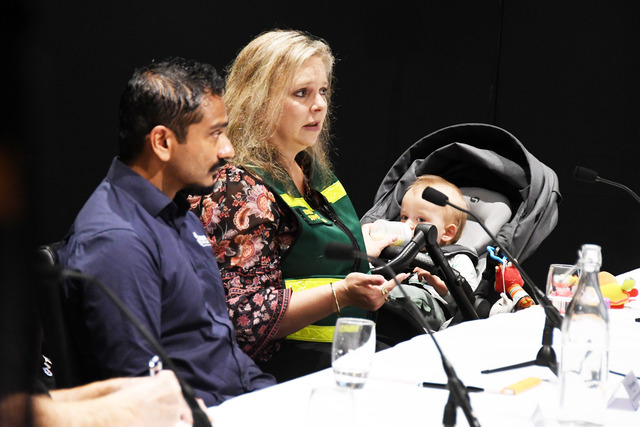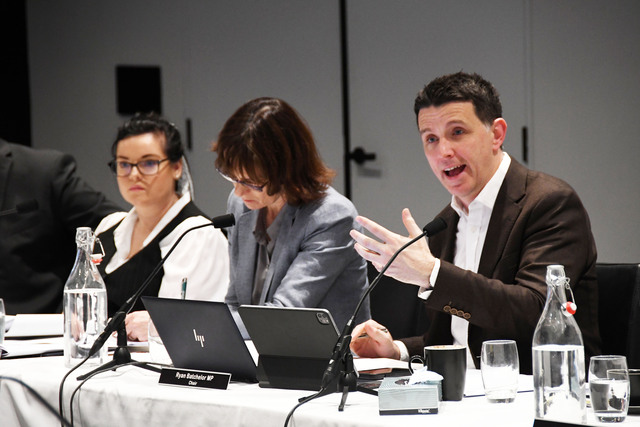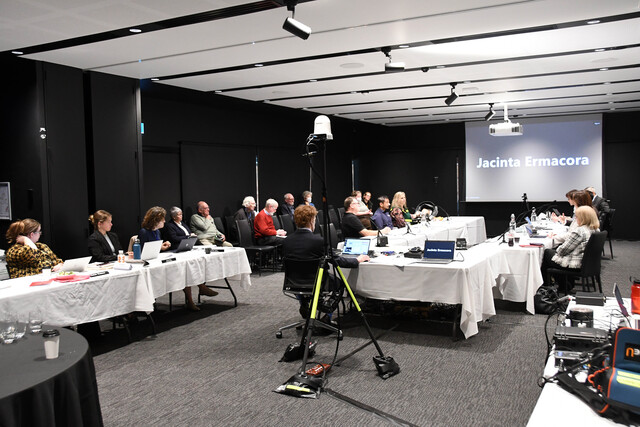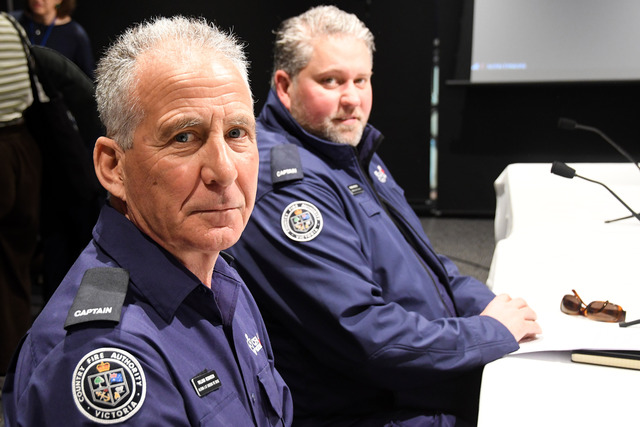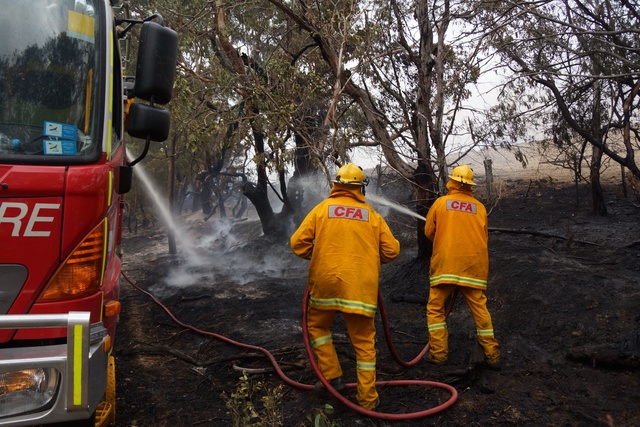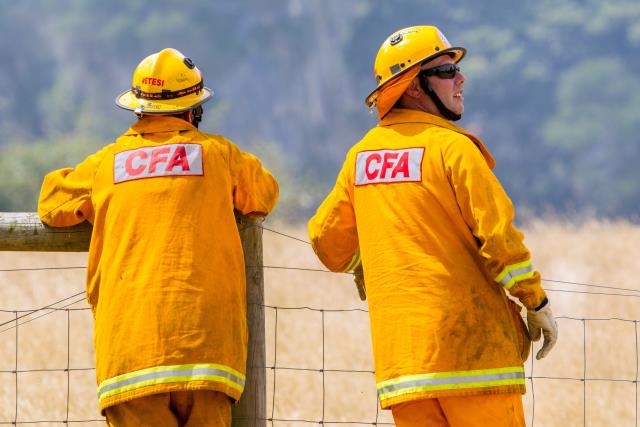The immediate need for improved telecommunications infrastructure, risk management and sustainable funding were all raised as just some of the touchstones for enhanced climate resilience.
The parliamentary inquiry into the state’s climate resilience ventured to Emerald on Thursday 10 October, with representatives from Yarra Ranges and Cardinia Councils, as well as CFA captains and emergency management groups airing concerns having experienced major climate-induced events in recent years.
Yarra Ranges Council’s acting director of built environment and infrastructure Kim O’Connor said as part of the council’s submission, it had 13 recommendations to ensure the safety of residents in the peri-urban shire.
Mr O’Connor said in the last 12 months, the Yarra Ranges experienced “five claimable events…it’s approximately $9 million of impact” and given the expanse of the shire, the events vary from the Dandenong Ranges to the Valley.
“Yarra Ranges Council is a municipality that is unique in its size, complexity and disaster profile,” he said.
“It’s one second most impacted in terms of disasters across 479 local governments in Australia, and that is underscoring the need for comprehensive and forward thinking strategies to enhance our climate resilience.”
With the increased risk of floods, urban heat, bushfires and soil subsidence, Mr O’Connor said “there are no static solutions in this dynamic environment” because “climate change is an evolving challenge”.
But he said this would not be possible without policy frameworks, “recurrent funding” and partnership.
“It’s essential we focus on places of most risk and where there are hazards. We can’t do it alone,” Mr O’Connor said.
“We need strong, centralised data analytics to prioritise and sustainably fund for resilience and community education.”
South East Councils Climate Change Alliance (SECCCA) operations manager Daniel Pleiter agreed that an established framework for climate resilience and response at a whole council level was still something that needed to be developed.
“What we need at the end of the day is certainty and clarity around what we need to do and consistency,” he said.
“At the moment, we are all as, alliances of councils or individual councils…we’re all going about that more or less the same, but still, there’s no established framework, and there’s no clarity, if you like, on how we then respond collectively, consistently, to the community.”
Significant funding challenges in both proactive and reactive approaches to climate-induced events was raised as an essential element of the immediate response from the State Government.
Mr O’Connor said while the council has undergone road sealing projects, it has “another $20 million of unsealed networks that are important evacuation routes”, which ties into both flood mitigation but also the safety of the community.
Within the recovery phase, Mr O’Connor said some tree events are not claimable, resulting in a cost burden for the council.
“The challenge we run into is for us to seek disaster recovery funding, both the State and Federal Government need to declare an event, and it needs to be significant for that to occur.
“I think the trigger is a few $100,000 so councils are then carrying that as part of their operations so to actually have more flexibility or available funds around how we can acknowledge that and access that, would be significant.”
One of Mr O’Connor’s final recommendations was an inquiry into the insurability of both private and government owned infrastructure, something he said the council was “finding is a significant challenge in the municipality”.
From a community perspective, telecommunications infrastructure and the lack of back up power was high on the list of priorities, with Monbulk and District Community Working Group member Dr Dan Jeyaseelan requesting that this be looked at prior to the final report in June 2025.
“I know this is supposed to conclude at the end of the financial year next year but if something can be done about communication sooner rather than later, it’ll be life saving,” he said.
“If we can get something in action before that time, because we’re just lucky. That’s what it is. We’re so lucky that nothing has actually happened, and no one’s had a massive heart attack, or someone’s been squished by a tree, and we couldn’t call anyone. We’re lucky.
“If we can somehow get that organised ASAP, that would be wonderful for the community and multiple other communities.”
Emerald and Cockatoo Emergency Support Team volunteer Rachel Mechielsen also raised the suggestion that telecommunication companies should be included in the incident control centre (ICC).
“We’re aware that telecoms are federally legislated but we would like to see the telcos compelled to have a seat in the ICC or the state control centre and be a part of the response, because at the moment, there’s nothing compelling them to do that,” she said.
Kalorama and Mt Dandenong Fire Brigade captain Bill Robinson and Emerald Fire Brigade captain Klaus Brodeck were on the receiving end of this lack of communication infrastructure.
“These vital services, in some instances, took weeks to repair, and the inability for people to call triple zero after the event was not acceptable,” Mr Brodeck said.
“There was no way to share information with some people on how help could be accessed, no communication, essentially off the mountain, cutting emerald off from the outside world.”
Mr Brodeck said while the last major bushfire for the Dandenong Ranges occurred in 1997, storm related events have kept the brigade busy.
“We attended 32 emergency calls in February this year, and that’s our busiest month in over 20 years,” he said.
“We attended house fires caused by the effects of not having power. We attended to people trapped in cars and houses under trees.
“The follow up storms also brought lightning strikes, creating fires. We assisted ambulances helping elderly people living at home without power, and their personal monitoring alarms went off.”
Mr Robinson said similarly in June 2021, Kalorama was shut down for 14 hours “we could not get anybody in or out of Kalorama for 14 hours”.
“At 8.30 a night the power went off when the storm started. By 10.30 there were very little comms. That’s radio comms, telephone comms. NBN was totally out so some people couldn’t phone the station or couldn’t phone triple zero to get help,” he said.
The return of communications in the Hills was around two weeks later.
Mr Brodeck and Mr Robsinson said the coordination from the ICC was also lacking during the storm events, with CFA volunteers told not to self-deploy but not getting the instruction on what to do, even though volunteers had eyes and ears on what was needed.
As more storm events occur, Mr Brodeck said while the SES is the lead authority, CFA volunteers have similar skill sets that can be of incredible use.
“Where the frustration comes in is that SES don’t have the resources we do. They’ve got 5000 volunteers, and we’ve got 50,000 volunteers statewide.
“Within Emerald SES’s response area there’s 12 different CFA brigades who all have similar skill sets with chainsaw and four wheel drive vehicles and do the same sort of thing so essentially, we can assist.”
Mr Robinson said when SES reaches surge capacity, jobs should then be directly handed to CFA to attend to each call within an appropriate time frame.
As these events become more frequent and vary in intensity, all parties in attendance said appropriate steps to improving policies, funding and recovery would be essential to the region.
Legislative Council Environment and Planning Committee chair Ryan Batchelor thanked all submitters for their comprehensive insights into what’s needed when the committee finalises its recommendations for June next year.

